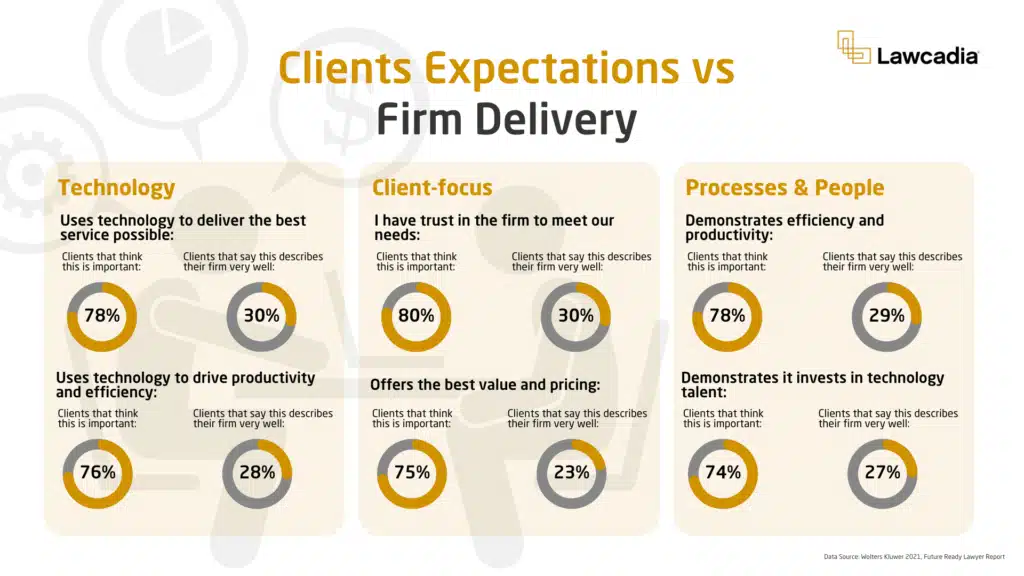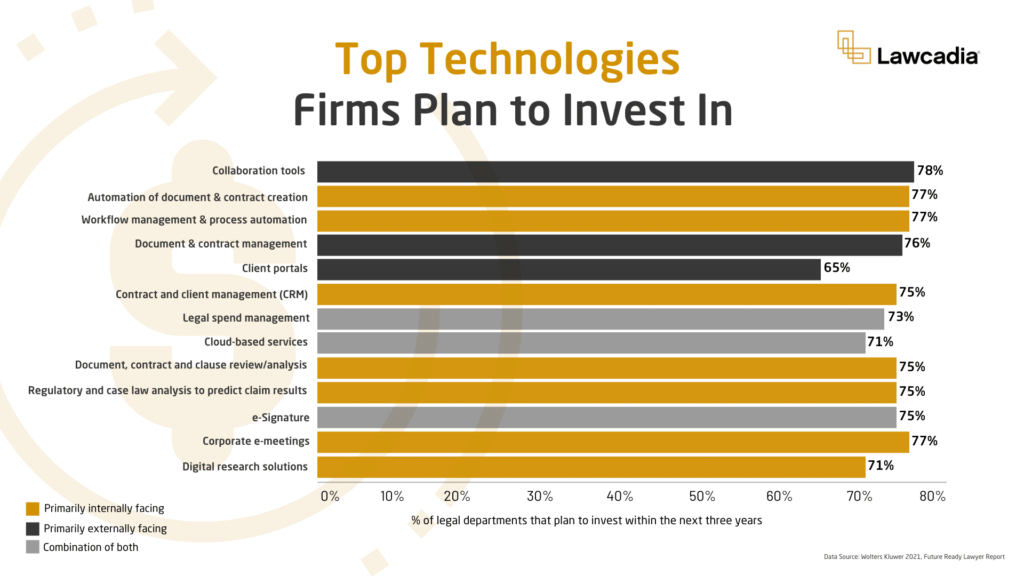In the continually changing and digitally augmented legal landscape, the client experience (CX) remains a key element that can distinguish one law firm from the next by contributing to a firm’s reputation, its clients satisfaction, and its competitiveness.
To that effect, while many refer to the current times as the ‘Digital Age’, others simultaneously call it the ‘Age of the Client’, thereby acknowledging the growth in demands and astuteness of the client, and resulting significance for business development and service delivery across all industries.
In this article we examine CX in the context of legal services, discuss ways in which law firms can understand and map the client journey, and provide three insights into what law firms need to know regarding the role of technology in improving the client’s experience and staying ahead of the curve.
What is CX?
Client experience (CX) is the sum of all interactions by a client with a service provider. Not to be confused with client service which refers to a single interaction or service, CX encompasses each touch point in a client’s journey – from when they first hear about the provider to the closing of a deal.
CX in legal services
In the context of legal services, the client journey usually begins through a referral from colleagues or peers or more likely, online where they search, research and compare various law firms and legal service offerings to receive advice or assistance with a matter or unexpected problem. This is the first point of contact where, depending upon their initial impression of a law firm, a prospective client decides if they should invest more time and engage with the firm further, or if they are better off continuing their search and finding an alternative (and more suitable) provider. As such, law firms should design their client experience proactively by considering the impressions, thoughts, and feelings they would like prospective clients to have when they come across or engage with their firm – which importantly, involves understanding the client, and subsequently, mapping their journey.
Understanding the smart client
Understanding the type of client that may seek or require your particular legal services means you can identify their wants, needs and expectations for engaging with your firm and subsequently, create a more accessible, relevant and positive client journey. Although each type of law firm or legal service will likely attract a diverse range of clients depending upon their specific needs (e.g., cyber security support, IP advice, litigation etc), one thing most clients will have in common is their propensity towards technology and digital tools. Indeed, the digital age has united smart technology with clients to create the ‘smart client’ that prioritises choice, convenience, and customisation above all else. More than this, the technology-empowered client is cost-conscious and expects their law firms to use technology to reduce costs, add value and offer a superior and distinct experience than that of its competitors. In short, it is now the Age of the Client and using technology to improve the client journey is critical to gaining new clients, maintaining relationships with existing clients and remaining competitive in the new legal landscape.
Mapping the smart client’s journey
Mapping the smart client’s journey means putting yourself in a prospective client’s shoes and considering how their interactions with your firm can fulfil their needs, exceed their expectations, and create an accessible, relevant, and positive journey. It involves documenting each stage of the client journey, from pre-engagement to the closing of a matter, so you can tailor each touchpoint to fulfil the client’s needs and achieve specific goals. For example, if you are a technology law firm, and you know prospective clients will do online research before engaging a firm, you may consider having a FAQ section on your website, a blog with insights or a live chatbot that can answer their questions on-demand, whilst simultaneously demonstrating your expertise and knowledge in the particular area. You may also consider having a digital client-intake form, which prospective clients can use to express their interest or request a call. For post-engagement, you may consider the service offerings or processes you have that can provide clients with choice, convenience, and customisation. For example, do you use technology to offer matter-based pricing? Can clients communicate and collaborate with you via an online portal? Can clients customise your service offerings? More importantly, do you use technology such as workflow automation, document automation or spend management to save your lawyers and your client’s time and money? These are all key (and general) considerations to make when mapping the client’s journey to ensure they have a relevant and positive experience when engaging with your firm.

What you need to know
1. First impressions count: Clients expect technology-enabled firms
78% of clients think it is important that law firms use technology to deliver the best service possible.
Technologies that can help law firms to deliver the best service possible are generally externally facing, ‘front-of-house’ tools. These are technologies and digital tools that primarily serve as the gateway of communication and interaction between a client and law firm. They are usually one of the first points of contact between a client and a law firm and can create a lasting impression which influences the extent to which the client will choose to engage with the firm now, and in the future. For this reason, it is important these tools are user-friendly, practical, and thoughtfully designed to provide a positive first impression, fulfil the client’s needs and facilitate a seamless experience. They include tools such as:
- Client intake forms
- Collaboration workspaces
- Chatbots
- e-Billing
2. Use technology to increase productivity and accelerate innovation
Majority of corporate lawyers expect changes to how their legal departments deliver services.
84% expect greater use of technology to improve productivity
78% expect an increased emphasis on innovation
Technologies that can assist lawyers or legal service providers (LSPs) to increase productivity and accelerate innovation are generally internally facing, ‘back-of-house’ tools. Clients do not generally engage with these tools and instead, they are used by lawyers and LSPs to optimise their service delivery. They are broadly defined as ‘LegalTech’, or ‘LawTech’ and are essentially designed to alleviate lawyers and LSPs of frequent, repetitive, high-volume tasks, so they have more time to focus on more valuable, strategic and innovative activities. These tools are built upon technologies such as cloud computing, AI automation and Big Data and analytics, of which can be delivered through out-of-the-box or custom software solutions to support lawyers and LSPs with various tasks to reduce costs, save time and increase efficiencies, whilst adding value to client service delivery.
Some of these tools include:
- Intake and triage software
- Workflow automation
- Document automation
- eDiscovery
- Project management
3. Law firms must continue evolving
61% of legal organisations plan to increase their technology investment over the next three years.
Digital transformation and innovation is an on-going process, that encompasses not just technology but also the people and processes of which they will affect. Therefore, an emphasis on customer experience is critical to achieve a sustainable competitive advantage. The Gadens Breach Manager is an example of this, where they have developed a solution that involves technology, process, and specialist knowledge to solve a unique and specific pain point whilst simultaneously demonstrating an innovative response to their clients. Importantly, access to data and analytics and reporting tools, means firms like Gadens can leverage this information to optimise their service, provide new offerings, offer strategic advice, and deliver clients with continuous value that exceeds their expectations.

Conclusion
In summary, the Age of the Client requires more than just ‘meeting client expectations’ and necessitates innovative solutions that demonstrate a deliberate bias towards technology that offers clients choice, convenience, and customisation, whilst reducing costs, saving time and adding service value. Accordingly, understanding the smart client and taking the time to map their journey can assist law firms to deliver a unique experience and stay ahead of the curve in a continuously changing and increasingly competitive legal landscape.

